The Risen Christ Surrounded By The Virgin And Saint John The Evangelist
Enamel painted in grisaille on copper, heightened with gold.
In its arch-shape copper frame, the handle on the back finished with a cloverleaf.
Very good state of preservation.
Limoges (France), first half of the 16TH century
H. 8.1 x W. 6.1 cm.
Enamel: H. 6.4 cm.
History
Still enshrined in its gilded copper mount, this image has retained its function
original liturgical osculatory (or kiss of peace). In the 16th century, the kisses of peace
frequently feature the iconography of Christ at the tomb. But in our case, Christ is represented alive, his eyes open, his head barely turned towards Mary: he has therefore just risen.
Seated on a base in the center of the stage, his torso facing the viewer, Christ constitutes the axis of symmetry of this isocephalous group. A thin perizonium surrounds his waist, his wounds are still bleeding, and rays of light emanate from his head. He is supported by Mary on his right, and Saint John the Evangelist on his left, both crowned and turning their heads towards him. The group stands out sharply from the black background. Excluding the lower part of the scene, the framing further draws attention to the center of the composition, occupied by the bust of Christ.
The perfect technique of grisaille tinted with touches of pink fondant, combined with the precise, varied drawing influenced by the antique and Italian mannerism, invite us to attribute the paternity of our enamel to Jean Penicaud II (1515-1588).
Coming from a family of enamellers, Jean II Penicaud was active in Limoges during the second third of the 16th century. The beauty of his works and their rarity on the market make this enameller a particularly sought-after artist.
Related works
- Jean II Penicaud (att. to), Virgin and Child, enamel mounted as a kiss of peace, h. 11 cm, kept at the French Museum of Decorative Arts (inv. 16741) (ill. 1).
Marie wears a long veil with the same pleating; although reversed, the position of his slightly lowered head and his face seen from three-quarters are comparable. Also, the small round tie under the collar with circular border from which the folds on the chest start is found very explicitly repeated on the garment of Saint John in our enamel.
- Jean II Penicaud, Christ Carrying the Cross, circular enamel, d. 12.1 cm, preserved in the Metropolitan Museum of New York (inv. 32.100.256) (ill. 2).
In the figure of Christ first, his face is similarly seen in three-quarters, he has the same bifid beard, long hair, and very fine golden rays emanate from his head. The figure of Saint Veronica has a garment very similar to that of Mary; the draping over the right shoulder of the character carrying the bottom of the cross is similar to that of Mary on our enamel. The face and hair of the executioner in a tunic are close to the features of our Saint John. Finally, we find on the enamel of New York the pronounced notation of the knee under the fabric present in Mary or Saint John the Evangelist.
- Jean II Penicaud, The Crucifixion, curved enamel plaque, h. 15.2 cm, kept at the Louvre Museum (inv. OA 2524) (ill. 3).
The figure of Christ is very similar: the same overflowing mustache above the lips, the same golden rays around the head, the same anatomical precision in the muscular rendering, fine perizonium with equivalent pleating; similarities also in the treatment of the shaded parts on the left part of the torso. Three female characters located at the foot of the cross wear the same type of long veil as Mary on our enamel. The holy woman standing against the left border has on her shoulder the same draped reverse revealing her arm as our Virgin.



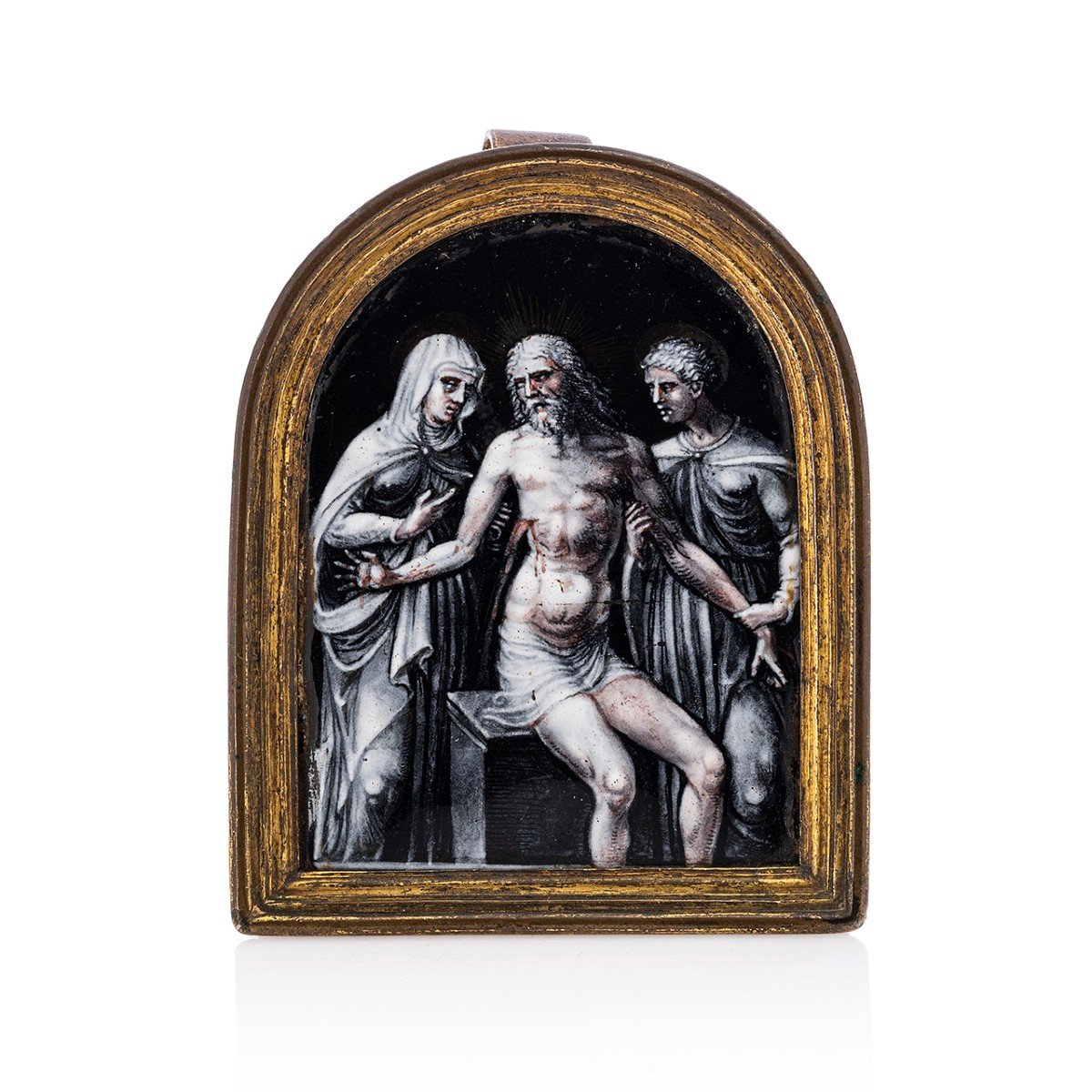

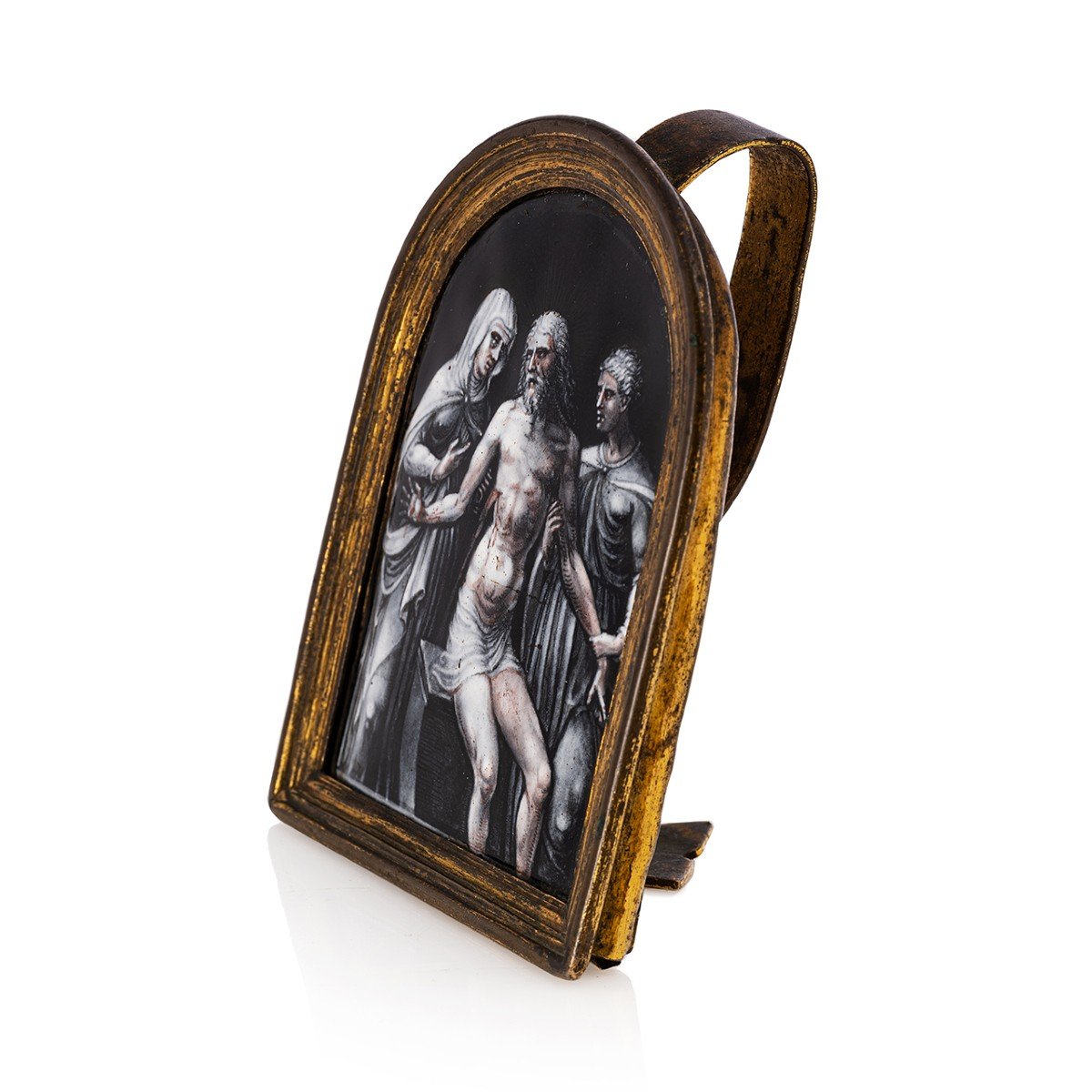
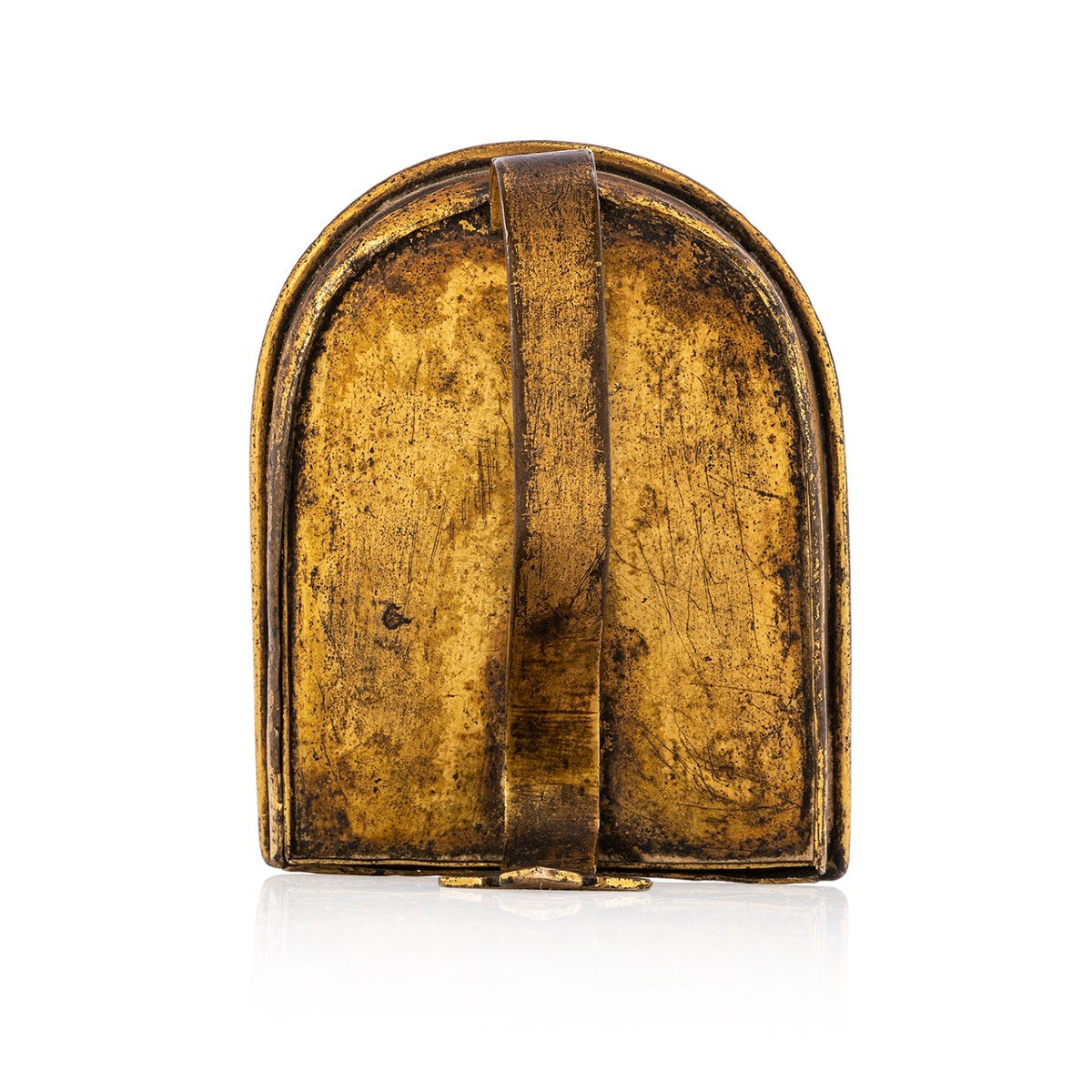
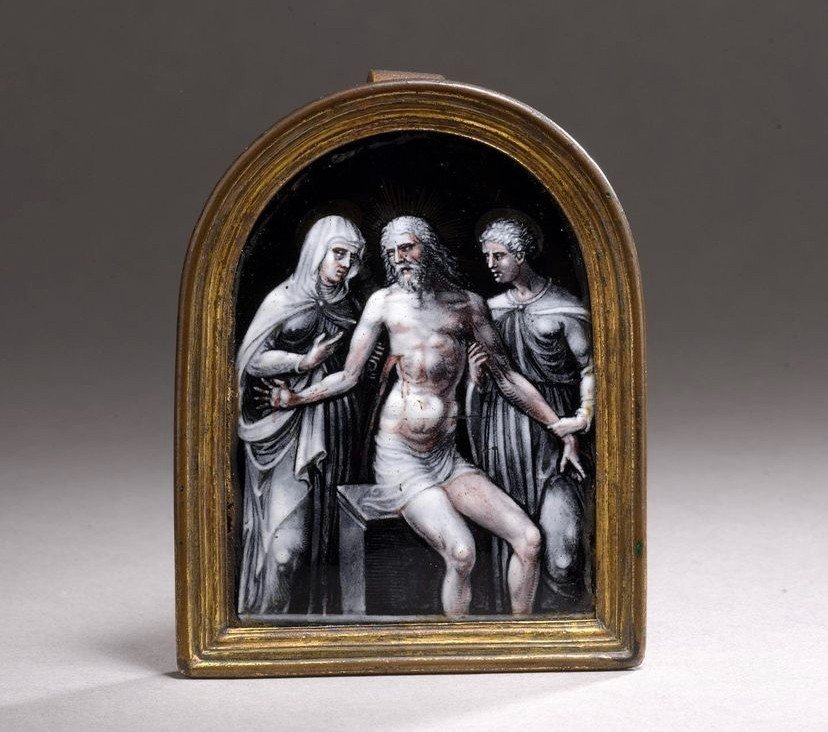
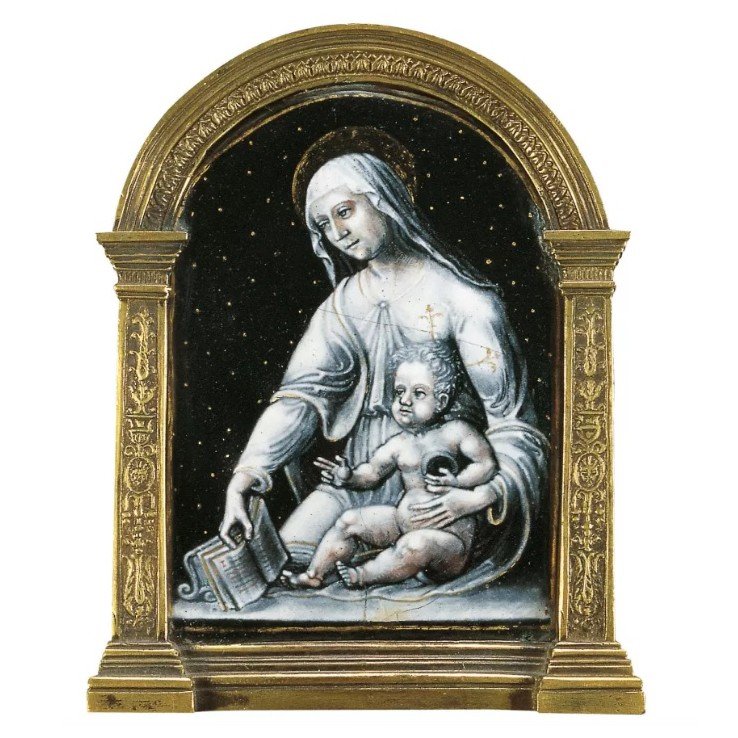


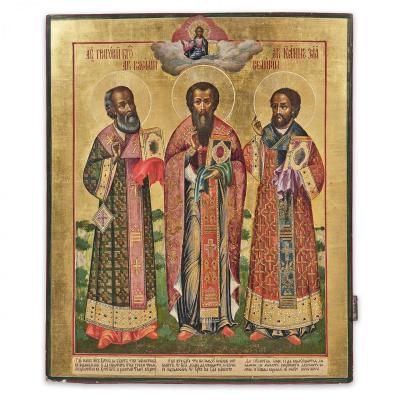






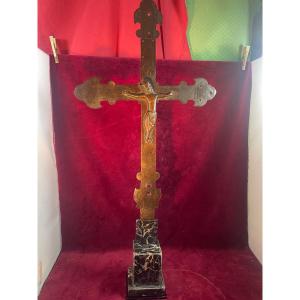

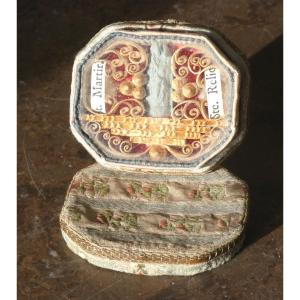





 Le Magazine de PROANTIC
Le Magazine de PROANTIC TRÉSORS Magazine
TRÉSORS Magazine Rivista Artiquariato
Rivista Artiquariato
